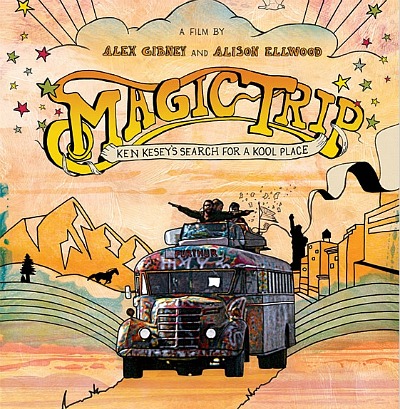During last January’s Sundance Film Festival, I wrote that Alex Gibney and Alison Ellwood‘s’s Magic Trip (Magnolia, VOD 7.1, theatrical 8.5) “offers fascinating color footage of the original 1964 coast-to-coast bus trip of Ken Kesey‘s Merry Pranksters, and tells the legendary story more or less completely with two glaring exceptions.

“One, there’s no mention whatsoever of Tom Wolfe or his book that almost single-handedly sculpted the Kesey/magic bus legend, “The Electric Kool-Aid Acid Test.” And two, there’s only one mention of the word ‘enlightenment’ in the whole film and no down-deep discussion at all of what LSD did to and for people during the early to late ’60s. The latter strikes me as borderline surreal given that LSD was the prime catalyst for the spiritual revolution of the late ’60s and ’70s.”
How do you make a doc about the bus without at least mentioning Wolfe’s book, by any standard the definitive account in the same way that John Reed‘s “Ten Days That Shook The World” told the story of the 1917 Russian revolution? And how could Gibney not explore to at least some degree the currents churned up by LSD, which was indisputably the biggest influence upon artist-youth-spiritual seeker culture of the ’60s in a thousand different ways and wound up influencing damn near everything?
Magic Trip is basically about new footage of the bus trip — that and very little else. Imagine some magical circumstance by which images of Jesus of Nazareth and his disciples had been visually captured or rendered in some immediate, first-hand way and then preserved and assembled for a documentary, and then the filmmaker decided to more or less ignore the fact that what these thirteen men did and said just over 2000 years ago in Judea resulted in a minor little thing called Christianity.
